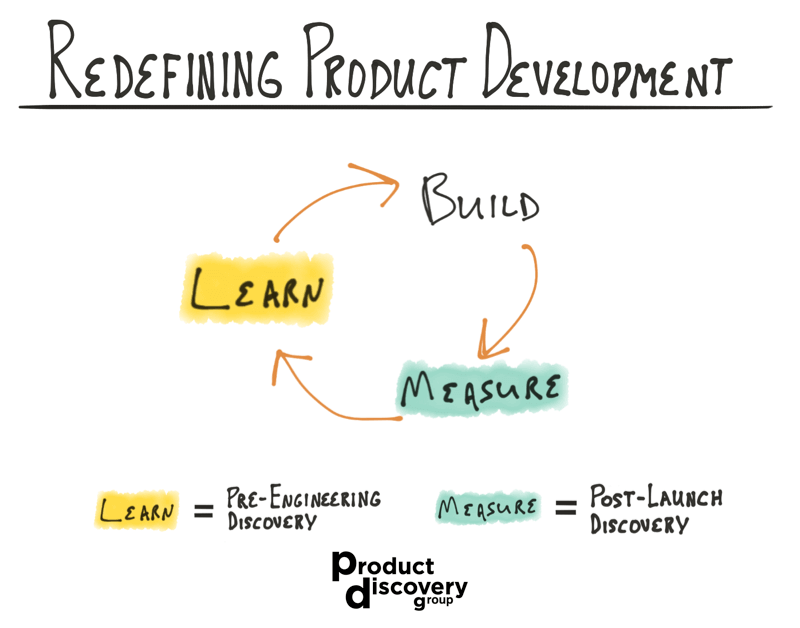Redefining Product Development
Many folks are familiar with the Build-Measure-Learn loop from the book Lean Startup.
The author, Eric Ries, advocates for creating shorter learning cycles.
You can speed up learning even more by starting with the Learn step. Most of my teams learn without ever writing a line of code.
After an introductory workshop, I take cross-functional squads through a 12 week program that starts with the Learn step. We find problems, create experiments and test with real users. After learning from our users, we can make the "go" or "no go" decision to build the product.
If a product gets launched, we then measure its impact from early signals (usage) to later signals (business outcomes) to customer satisfaction.
With these quantitative measurements, we can make tweaks to the idea and then plan another round of user feedback to understand why the numbers changed the way they did (or didn't).
As you finish the investigation of one product or feature, you can start the next Product Discovery cycle.
Every Product team should talk to customers on a regular basis to understand their problems, test solutions or just check in.
Each customer touchpoint is a chance to learn.
And the process continues...
Maybe you're able to test, build and measure on a weekly basis. Every 2 weeks. Or maybe a monthly basis.
The idea is to keep your customer research active at all times. The faster and more frequent your learning cycles are, the faster you'll reach product-market fit or growth.
Over time, my most mature teams will find and measure a set of baseline metrics that describe what's happening with the user and the product in general.
These may not be specific to one product or feature.
They will likely span multiple teams and provide a baseline for setting future Objectives and Key Results.
Put it all together and you get Continuous Product Discovery. I've achieved this continuous learning with my own teams several times in my career.
Your teams can do it too.
Jim is a coach for Product Management leaders and teams in early stage startups, tech companies and Fortune 100 corporations.
Previously, Jim was an engineer, product manager and leader at startups where he developed raw ideas into successful products several times. He co-founded PowerReviews which grew to 1,200+ clients and sold for $168 million. He product-managed and architected one of the first ecommerce systems at Fogdog.com which had a $450 million IPO.
Jim is based in San Francisco and helps clients engage their customers to test and validate ideas in ecommerce, machine learning, reporting/analysis, API development, computer vision, online payments, digital health, marketplaces, and more.
He graduated from Stanford University with a BS in Computer Science.






